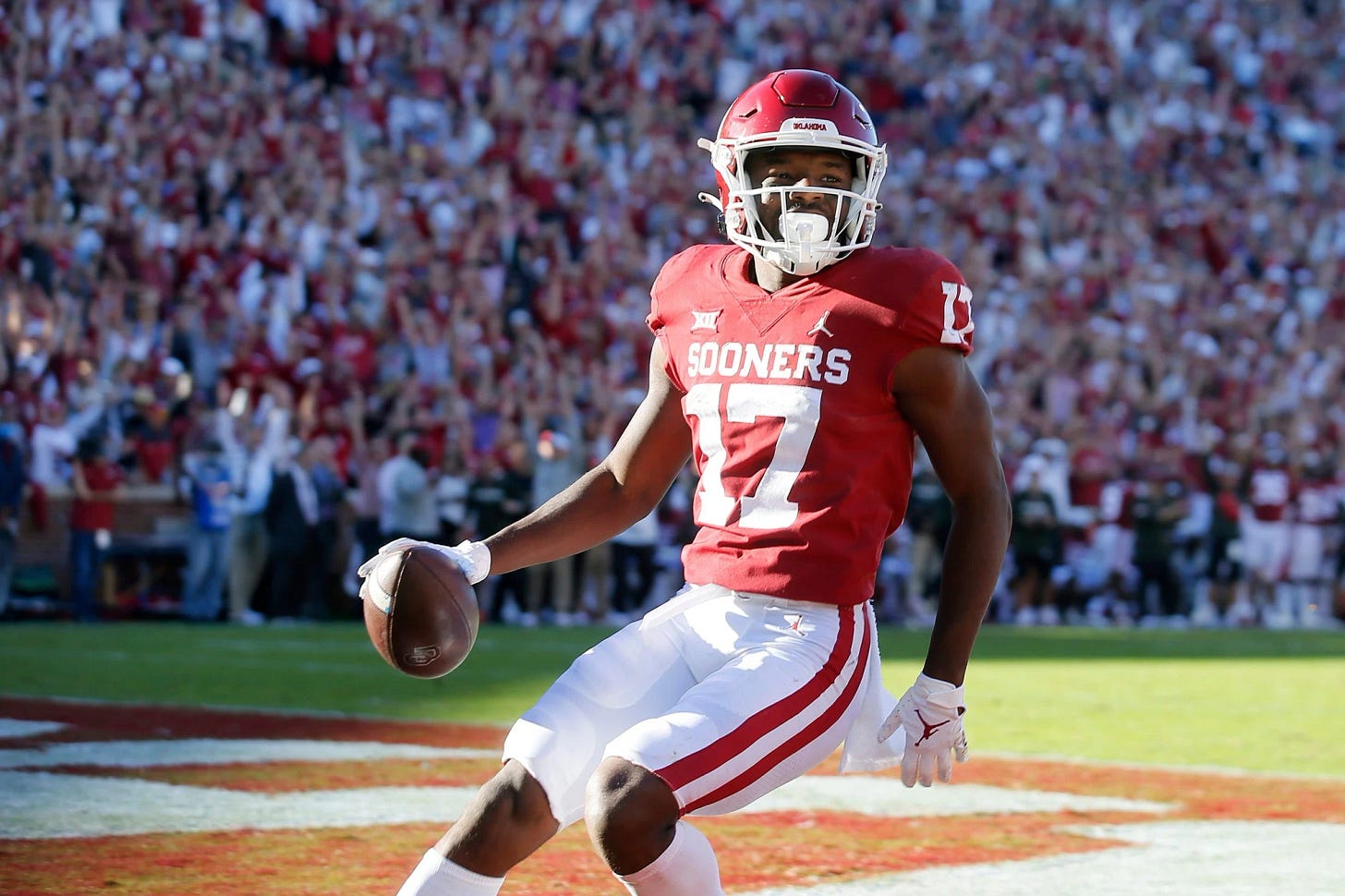Post-NFL Draft 2023 Wide Receiver Prospect Model
Using college stats, combine metrics and draft positions to project the 2023 wide receiver class into the NFL
Before the NFL draft, I detailed the methodology and published the results of my wide receiver prospects model using estimated draft positions from Grinding the Mocks. Now we have the real thing, and many model scores and rankings have shifted with the updated information on how the NFL views the 2023 wide receiver class.
Before jumping to the results, I’ll briefly restate the primary drivers of the model and lay out the variables that are feed into it. The model score is the percentile among receivers from draft classes going back to 2009 for projected fantasy football results, specifically the number of top-6, -12, -24, and -36 weekly fantasy finishes over a prospects first three NFL seasons. We could extend the window further to cover a player’s entire career, but the point in the real NFL draft and fantasy rookie drafts is to see a return on investment earlier rather than later.
While my research shows that NFL Scouting Combine results have a significantly greater impact on draft position than actual NFL value and production, you can’t afford to fade the crowd coalescing around their favored prospects. Despite tremendous advancements in our ability to collect data on college prospects, the most meaningful single variable in determining NFL success is draft position.
METHODOLOGY
This analysis uses what is known as an ensemble model, or a blend of the results from different models which are then blended together to form a single, and hopefully more precise, final prediction. One of the models is tree-based, the other linear.
The features for each wide receiver in the models are as follows, ordered by relative importance and statistical significance. The stats are from the prospects’ best statistical season in which they played at least five games and logged at least 25 targets. All of the numbers are calculated only using games in which the prospect played:
Draft position
Career receiving yards per team pass attempt (proxy for yards per route run)
Early declare status
Max-season receiving yards per team pass attempt
Final-season share of team touchdown receptions
Yards per reception
40-yard dash time
Weight
Draft position is the most important feature in predicting fantasy success for wide receivers, followed by production and then athletic measurements. Looking specifically at the calculated importances in the tree-based model, draft position is nearly double any other feature.
After draft position, the most most important features differentiating wide receiver prospects are career efficiency in receiving yards per team attempt and early declare status. I explained before why career numbers can be more meaningful than those from a prospect’s final season, and early declare status has also offer a lot of signal for finding undervalued receivers who didn’t play all the way through they’re four seasons.
Higher-drafted wide receivers at top programs are more often coming from receiving groups with two, three and even four drafted players, thereby diluting their shares of team production due to split workloads. To account for this, I adjusted up the career shares of team receiving yards and touchdowns for wide receivers by the number of wide receivers they played with during their careers.
2023 WIDE RECEIVER CLASS
Jordan Addison joins the top tier and even scores slight better in the model with his draft position locked in at 23, only slightly lower those of the other Tier 1 receivers. Addison probably has the lowest chance to eventually become his team’s WR1 playing alongside Justin Jefferson for the duration of his rookie contract, but the Vikings don’t have much else, meaning a solid WR2 role is within reach in 2023.
Quentin Johnston jumped Jaxon Smith-Njigba in the model, with his actual draft position only one slot lower than estimated in the pre-draft model, while Smith-Njigba fell six spots. Both receivers are going to locked into WR3 on their teams’ depth charts in 2023, as long as there isn’t an injury above them.
Looking purely at volume, Johnston has a better macro environment to accumulate fantasy points with the Chargers, who had the second most pass attempts last season at a massive 711. The Seahawks were 15th with 573 pass attempts. It’s also more likely that Justin Herbert maintains his recent passing efficiency and success than previous backup Geno Smith equals his year-nine breakout.
Both receivers could have an early window to move up the pecking order with Tyler Lockett and Keenan Allen in their early 30s, and Allen only having one (very expensive) year left on his current contract.






